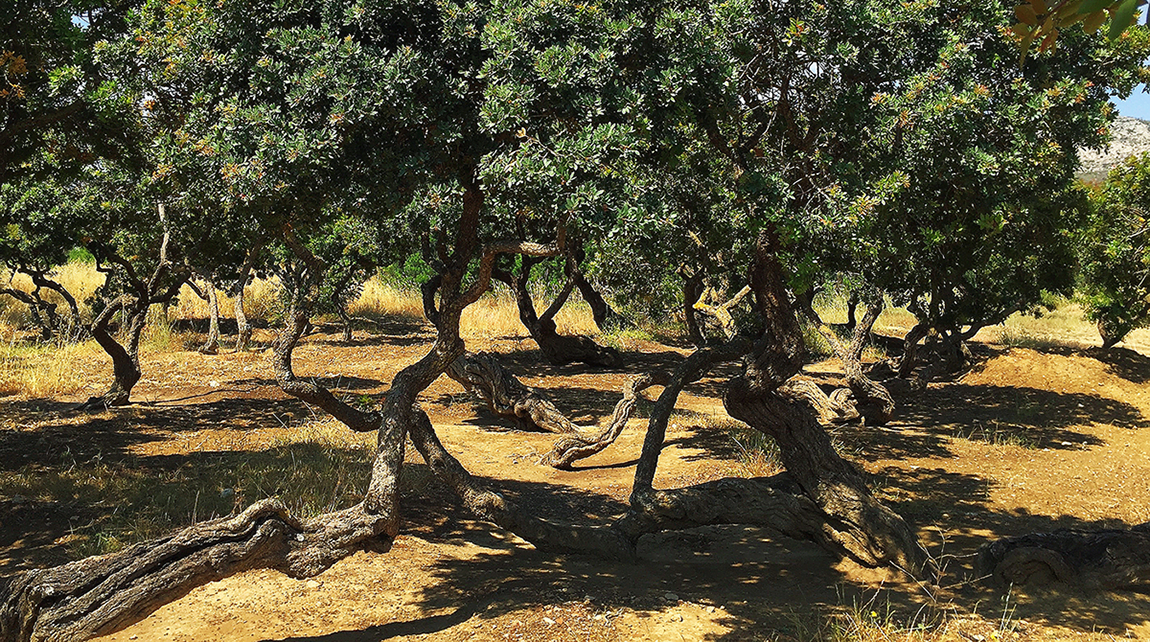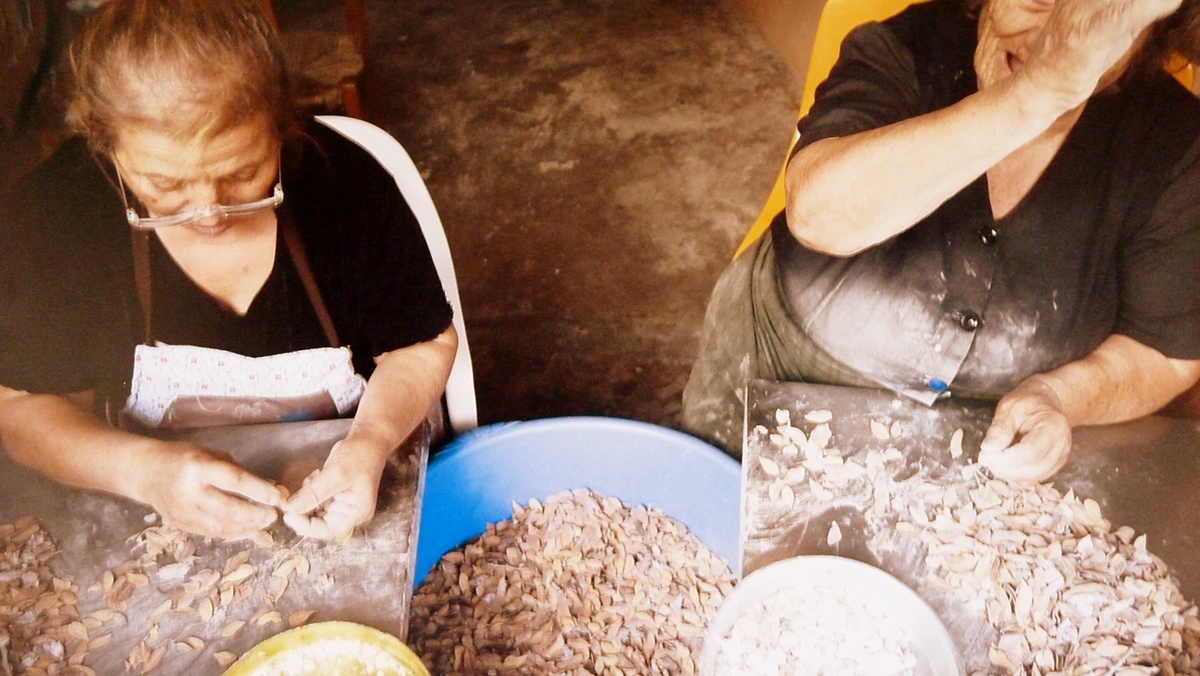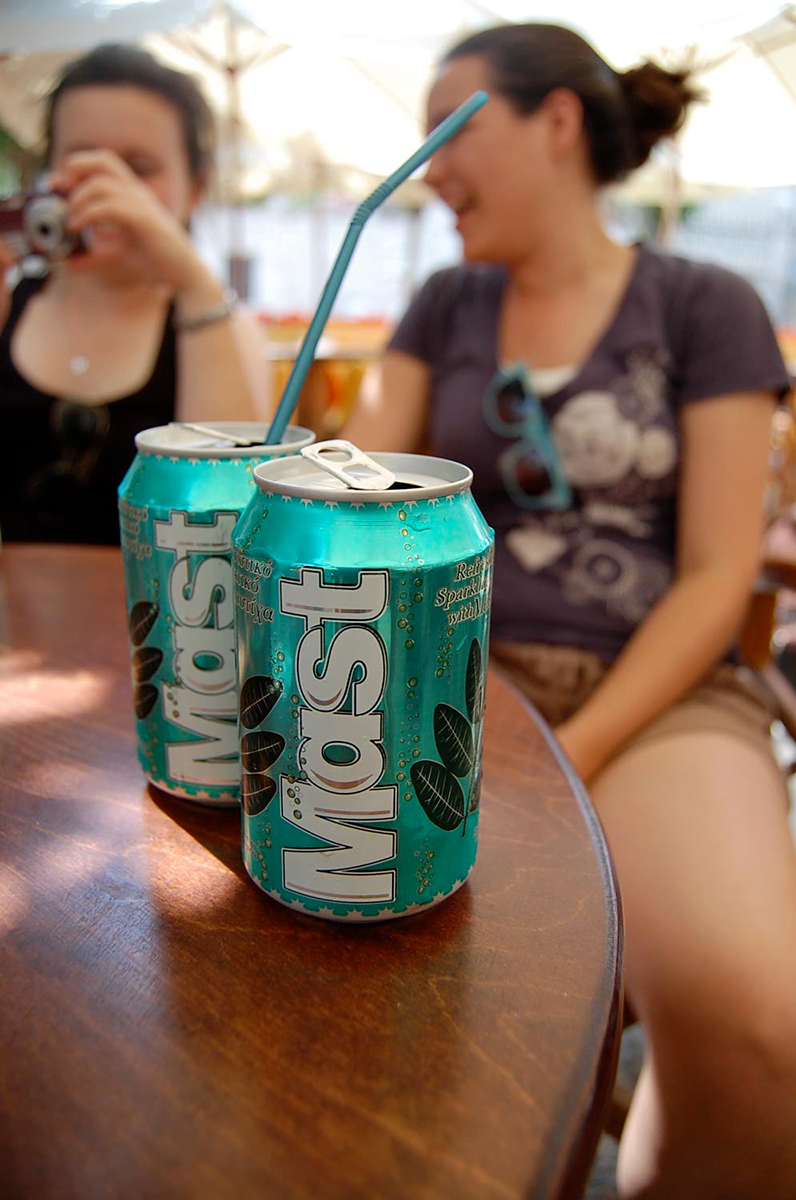Mastic; Greek Magical Tree Tears

So what’s the big deal with it? you might ask.
Well, these little teardrops – and anything you add them to – have a wonderful unique aroma and taste, along with some pretty impressive health benefits.
Where can you find Mastic?
Its flavor is earthy and slightly smoky, accompanied with a fine resinous aroma. To a Greek it probably tastes like holidays, as it is used to flavor spirits and liqueurs (such as Chios’s native drink “Mastiha”), festive foods, like the sweet brioche-like bread “tsoureki” and the traditional New Year’s “vasilopita”, as well as ice creams, sweet puddings, almond cakes and the traditional Greek spoon sweets. It is also essential to “Myron”, the holy oil used for the sacrament of Chrismation by the Orthodox Churches. Finally, it also conjures memories from our childhoods, as in old times it was used to flavor traditional chewing gum and a number of desserts like the hard-to-find nowadays “ypovrichio” (meanining “submarine”, technically a huge spoonful of mastic-flavored cake-icing served in a glass of ice-cold water). Mastic is also used in traditional and gourmet cooking or even in cheese-making. In Turkey it is the key ingredient in “dondurma” (Turkish ice cream) and Turkish puddings and in Lebanon and Egypt, the spice is used to flavor many dishes, ranging from soups to meats to desserts, while in Morocco, smoke from the resin is used to flavor water.

Mastic tear Photo Credit: Marmontel
Why Mastic is healthy?
But its more impressive property is this rare combination of “tasteful” and “healthy”. As the first-century Greek physician and botanist Dioscourides wrote – and many university studies confirmed – the resin and especially the mastic oil is a stimulant and diuretic and soothes gastrointestinal ailments. It absorbs cholesterol, thus easing high blood-pressure and reducing the risk of heart attacks, while healing peptic ulcers. It also has antibacterial and antifungal properties, therefore it is used in ointments for skin disorders and afflictions as well as in the production of cosmetics from toothpaste (it reduces bacterial mouth plaque), lotions for the hair and skin and perfumes and in more than 100 products, as its list of wonders is long and go from anti-cancer properties to aphrodisiac effects.
Mastic in the ancient times
First mention of the above was, however, by Herodotus, two and a half millennia ago. According to references the ancient Egyptians also used it for its antibacterial abilities in embalming. The ladies of Roman conquerors used it as a breath freshener and a teeth whitener and Christopher Columbus once wrote that this miraculous resin might even be the answer to cholera epidemics. During Ottoman rule it was highly prized and reserved for the Sultan’s harem, where they cherished it both as a breath freshener and for its use in cosmetics. Chewing mastic soon became the exclusive privilege of the Sultan – and of course his harem’s too – as it was considered to have both aphrodisiac and healing properties; in return, the inhabitants of Chios were rewarded by the Sultan who granted them special privileges.

Mastic cleaning Photo Credit: Kostas Limitsios
Why you can only find Mastic in Greece?
The funny thing with these bushes, however, is that although they grow in many places around the world, they only give out that kind of resin on the rocky soil of the Greek island of Chios; to be more precise, in its southern part where a fortified complex of 24 villages (the ‘Mastihohoria’ – meaning the Mastic villages) occupies an area of marginal microclimate. The dry and hot conditions are enhanced by the fact that the local growers have kept the more productive of the bushes and passed their genes down to new trees over the past 2400 years.
As you might already imagine, many have tried to “steal” this valuable trading commodity away from the island, through the centuries. At times, a kilo of oil extracted from this resin could cost more than 3000 euros and the mastic production cannot increase overnight as the bushes have to reach six or seven years old to get productive. Even then, only some of them will give more than 10 grams of resin a year – a good one might reach 200 grams and only a few rare ones reach 2 kilos – and not each and every year. There have been attempts to move the mastic production to nearby similar places or in the mainland and people have even stolen productive trees to plant and reproduce them elsewhere… But they won’t produce this mastic resin anywhere else!

Mastic soda Photo Credit: Panegyrics of Granovetter
Where can you find Mastic?
So, when in Greece, do try the unique local secret; it comes in so many different forms that it is impossible not to find something to bring back home or offer as a gift – a good idea would be to visit one of the “Mastichashops”, which are dedicated to foods and cosmetics made from the rare ingredient MastihaShop.
You can even discover the unique and interesting culture of the product with a trip to the very place where the tears trickle down the bushes’ branches: Chios island, and especially its Mastic Villages which showcase rare beauty and Mediterranean medieval architecture. It is a destination that will charm you with its beauty, rich history and warm hospitality. You can even seek a hands-on experience as there are specially organized agro-tourism activity programs that offer a firsthand presentation of the mastic production.
Cover Photo Credit: Güldem Üstün
Feeling Ready?
From our blog

Ultimate Rome Travel Guide: What to See and Do
READ MORE
The Best Greek Islands for Couples, According to a Luxury DMC
READ MORE
Discover Milan: Top Attractions
READ MORE
Athens in February Travel Guide
READ MORE
When Is Easter 2026? Dates from 2026 to 2030
READ MORE
Crete 2025 Travel Guide
READ MORE
How Many Days in Mykonos
READ MORE
Santorini Travel Guide: Everything You Need to Know
READ MORE
Where to Stay in Mykonos: Insider’s Guide
READ MORE



